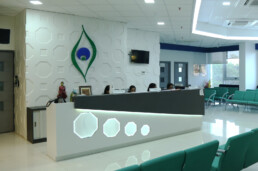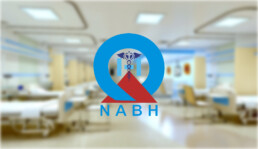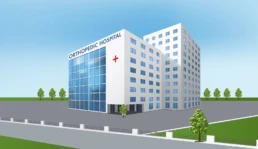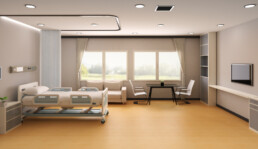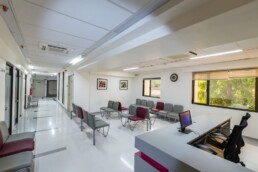Cardiac care design is moving at the sound of a new beat! We have nearly 3 billion people in India, and 35 million suffer from heart disease. This has increased demand for world-class cardiac care in tertiary care centres and Tier 2 and 3 cities. In fact, the number of cath labs (cardiac catheterization laboratory) in the country has grown by almost 100% in 5 years. We now have 1300-1400 cath labs in about 140 cities nationwide, building the market value to 1000 crores in 2019.
There’s no doubt that building a super-specialty care department like a cardiac cath lab is an expensive investment. Planning and creating the best lab for your organization will require astute insights into the trends in the healthcare industry, the estimated revenue from the investment, and the existing infrastructure. A good plan leverages inputs from all relevant stakeholders – from hospital owners and administrators to cardiologists, interventional radiologists, and biomedical engineers dealing with equipment, as well as the staff on the ground, like technicians and nurses. As architects and hospital designers specializing in healthcare, we value their experience and insights. As end-users, their experience goes a long way to a successful venture.
Some of the most important factors that need to be kept in mind [when designing buildings for specific healthcare needs] are vertical and horizontal zoning of departments based on patient, staff, and process flow.
Satyendar Khurana, Vice President, Projects and Development, Columbia Asia Hospitals Pvt Ltd.
Among all the practical considerations when planning to build an interventional cath lab, one should consider the key components:
- Functionality: Are the facilities suitable for maximum workflow efficiency?
- Configuration: Are the equipment placement and room arrangements suitable for patient care?
- Safety: Are the lab location, entry points, and layout optimized for patient and staff safety?
A cath lab may now display its quality standards through accreditation and by joining industry quality improvement registries, according to the Catheterization and Cardiovascular Interventions report on the 2021 Society for Cardiovascular Angiography and Interventions (SCAI). In India, the NABH (National Accreditation Board for Hospitals and Healthcare Providers) has its standards for speciality care centres within healthcare organizations.
Challenges in Cath Lab Planning
It would be perfect if every healthcare organization had the space to accommodate the facilities and equipment that cardiac care centres need to function well. However, the reality is that many healthcare organizations have had to renovate existing infrastructure to accommodate new centres of excellence. They may not have the ideal specifications or space in a brownfield project (repurposed space) as in a greenfield project (new construction).
A significant challenge is always the lack of space. Many cardiac cath programs include teaching and training components, which means that many people are required to be in the lab as a procedure takes place. We need ample standing room, patient observation rooms, stretcher access, and patient movement.
“When you cut space out of functional areas, you are reducing the value of the end product,”
James Easter – director of the healthcare planning department at HFR Architecture Engineering in Brentwood, Tenn.
Necessary Components of a Cardiac Cath Lab
Even if space is limited, there are a few industry recommendations when it comes to planning a cardiac cath lab. Here are the integral elements for efficient workflows:
- Procedure room is the heart and soul of a cath lab! The ACC (American College of Cardiology) suggests 500-600 sq. ft. for the procedure area. It also includes counter space, storage, sinks and computer terminals. The area should be large enough to allow patient movement through a bed or a stretcher.
- Control room holds control panels for the imaging and hemodynamic patient monitors. According to ACC guidelines, 150-200 sq. ft. is adequate for the control room. It may be slightly elevated than the procedure room for good visualization.
- Patient holding areas and recovery rooms are used to assess patients before and after the procedure, with ample space for bedside monitors, ECG equipment, medical code, and emergency care equipment, crash carts and nurses stations for documentation.
- Equipment storage space should also be configured with cabinets and drawers to hold consumables used for the procedures, like catheters, gliders, balloons, stents, and guide wires.
- Cath Lab Equipment:
- Imaging Equipment like Rotational Angiography allows 3-D imaging of the arteries
- Hemodynamic Monitoring Equipment to track patient vitals during a procedure
- The cardiac cath lab table must be large and have a minimum of ninety-degree lateral movement. Tables may be floor or ceiling-mounted, depending on the room size. Other items include table accessories, lighting, injection systems & radiation shields. The table weight capacity should be as high as possible.
6. Lighting usually includes soft perimeter lighting. These lights may be dimmable during the procedure while using bright surgical lighting for focussed illumination.
7. Data access and storage of patient information have increased the demand for an electronically connected cath lab. Hence It is also important to plan for the reams of cabling needed for smooth, uninterrupted information and internet services.
“Cardiovascular centres are not about machines or even process modes. They are all about sharing information—getting reports to physicians, scheduling information, and redundant data entry.” Dr. Bill Burke, Director of Cardiology, South Shore Hospital in Weymouth, Mass, USA.
8. Ancillary areas include staff changing rooms close to the cath lab, which allows rapid access to physicians. Family waiting areas are generally near the procedure room to allow loved ones to be close to the patient. Doctors find it easier to visit relatives before or after the procedure to update them on the patient’s progress.
3 Lessons Learned While Building a Cardiac Cath Lab
When creating healing spaces, we must seek to design the most user-friendly layout for better clinical outcomes.
“In the past, it was common to put cardiac surgeons in existing ORs or spaces where they had to “make it work, but today, we create the right environment for the best outcomes,” says Michael Zambo, principal at Bostwick Design Partnership, Cleveland, USA.
We have delved into the essential elements of healthcare design in our blog, linked here:
https://www.shreedesigns.in/essential-elements-of-healthcare-design/
Here are a few tips we used when designing and building cath labs in many healthcare organizations.
1. Location, Location, Location!
When planning a cath lab, the first major consideration is to decide where the lab would be built inside the healthcare organization or hospital. Ideally, it should be located as close to the ambulance entrance as possible to allow for quick transfer of patients who need emergency care. For centres with helicopter access for patient transport, proximity to the helipad should also be considered. Think about the location of the cardiac ICU units and cardiac operating theatres within the hospital when transferring admitted patients for emergency procedures.
A final but major consideration is the location and size of the elevators that lead to this area. The width and length of the elevators must be large enough to fit patients on beds or stretchers along with their support equipment like IV poles, monitors, and transport staff.
2. A Matter of Height!
Are the rooms large enough to accommodate ceiling-mounted equipment? Cath labs must house large machines with advanced technology, often installed in the ceilings and the floor for stability. This increases the need for significant structural reinforcement in the ceiling and floor to support the equipment. We also need to check if there is enough space for lighting, ductwork, and wiring in the ceilings or if the lines need to be set up along the walls.
As technology advances and machines change, the room should also be flexible enough to accommodate these changes. Some organizations may want to invest in robotics. In contrast, others want to create hybrid procedure rooms that can serve as both a cath lab and a cardiac operating centre, to maximize space.
“Lots of facilities are building sterile ORs that are cath lab-capable,” says Carolyn Weaver, executive vice president of John O. Goodman and Associates, a consulting firm in Las Vegas.
This type of configuration can have high set-up costs, but it can recover its costs faster as it can be used all day long because of its multi-functionality.
3. Wide Open Doors!
Many cath labs are now investing in automatic, sensor-based doors that allow even one staff member to transport patients on a stretcher or a bed movement. This is useful in emergencies when all hands are focused on the patient.
Extra-wide, two-panel doors leading into the procedure room are also being used to accommodate a patient in a critical care bed with support equipment like a ventilator or a balloon pump that needs multiple staff for transport.
Conclusion:
Specialised cardiac cath labs need specific requirements. We had an opportunity to collaborate with leading healthcare organizations to design and build cardiac cath labs at the Symbiosis Speciality Hospital, Dadar, Mumbai, and the Catheterization Lab in Upasani Super Specialty Hospital, Mumbai.
You can find out more about these projects here.
Related Posts
Designing Healthcare Facilities
Textures in Healthcare Spaces
When designing hospitals or clinics, texture is often seen as a “finishing touch.” At Shree…
Infographic,Designing Healthcare Facilities
The Lifecycle of a Healthcare Facility Design
Ever wondered what goes into designing a hospital or clinic that actually works - clinically,…
Designing Healthcare Facilities
Designing NABH-Compliant Hospital Interiors
A well-designed hospital isn’t just about aesthetics. From fire safety and infection control to…
Infographic,Designing Healthcare Facilities
Blueprint for Healthcare Design
From room dimensions to lighting levels, every detail matters in healthcare design. At Shree…
Designing Healthcare Facilities
Building Better Day Surgery Centres
Efficient care, happier patients, and smarter workflows - this is what defines a successful…
Project Management,Designing Healthcare Facilities,Infographic
Designing Healthcare Spaces That Truly Heal
From concept to completion, every medical space we design prioritizes patient flow, staff…
Designing Healthcare Facilities
The Business of Wellness
In the $1.8 trillion wellness industry, first impressions matter. Patients don’t just choose a…
Designing Healthcare Facilities
Efficient Hospital and Clinic Design
India’s emerging cities are growing rapidly, creating an urgent demand for accessible and efficient…
Designing Healthcare Facilities
Creating Calming and Confidential Spaces for Fertility Clinics
As the demand for fertility treatments grows, the architecture of these clinics plays a vital role…
Designing Healthcare Facilities
Designing the Perfect Hospital Pharmacy
Hospital pharmacies are the backbone of seamless patient care. From efficient workflows to secure…
Designing Healthcare Facilities
Preventive Care Facility Design Strategies
With preventive care emerging as the future of healthcare, this post outlines key architectural…
Designing Healthcare Facilities
Thermal Comfort Decoded
Thermal comfort plays a critical role in patient recovery, staff productivity, and overall…
Designing Healthcare Facilities
Building for Tomorrow: The Imperative of Adaptable Healthcare Design
Healthcare facilities need to be as dynamic as the industry itself. Traditional, rigid designs can…
Designing Healthcare Facilities
Designing Single Speciality Healthcare Centres
As single-speciality centres grow, their design needs become more specific, calling for tailored…
Designing Healthcare Facilities
Innovative Design Solutions for Senior Care Facilities
Designing senior-friendly spaces in healthcare facilities is crucial for catering to the evolving…
Designing Healthcare Facilities
Designing a Dental Clinic for Success
Providing quality dental care is not just about the technical elements of the treatment. It's also…
Designing Healthcare Facilities
3 Essential Design Features for Intensive Care Units
ICUs are not just limited to single units housing all critical patients. If the facility has…
Designing Healthcare Facilities
5 Essential Elements of Healthcare Design
Design makes a significant impact on the delivery of care for both healthcare providers and…
Designing Healthcare Facilities
5 Best Ways to Create Healing Spaces for Kids
Designing spaces in healthcare facilities tailor-made for children is a lesson in balance! A…
Designing Healthcare Facilities
Top 5 Trends in Healthcare Design
Design can make all the difference when it comes to improving patient care. From a patient’s point…
Designing Healthcare Facilities
The Architectural Design of Hospital Facilities
Shree Designs designed and executed many efficient and safe healthcare setups in the middle of the…
Designing Healthcare Facilities
Dauntless Designers
Healthcare Radius in its 7th Anniversary Special issue in October 2019, featured a "power list of…
Designing Healthcare Facilities
The changing face of healthcare design
After completing a decade in designing healthcare projects, Kshititi Nagarkar, principal architect,…
Designing Healthcare Facilities
Thumb Rules for Planning and Designing of Hospitals
Traditional rules of thumb in healthcare planning have changed. Once-accepted rules can now be the…
